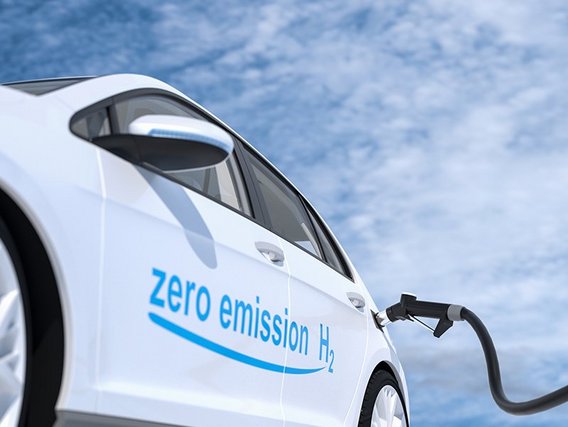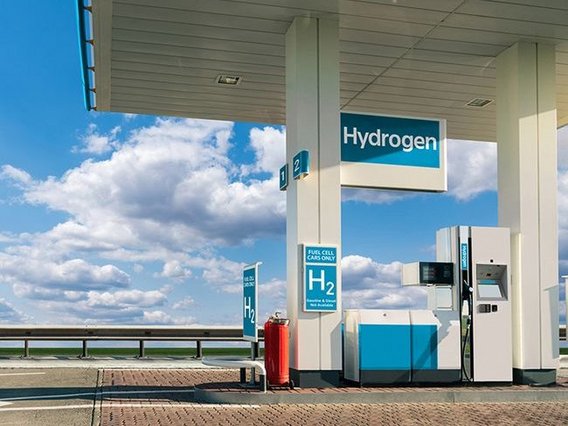Hydrogen replaces diesel drive in the railway network
Around 40 % of the German railway network is not electrified. Until now, diesel railcars have been used almost exclusively for passenger transport on these overhead lines. Here, the conversion from diesel to hydrogen technology represents a particularly economical, environmentally friendly and sustainable solution. For example, regional trains can be operated with green hydrogen while retaining the train architecture and without significant changes to the centre of gravity.
Successful test phase of hydrogen trains in Lower Saxony
To test such a platform solution, two hydrogen-powered Coradia iLint trains from the manufacturer Alstom went into operation on the Weser-Ems network in 2018. The trains have a range of 600-800 kilometres and have tanks installed on the roof that are filled with gaseous hydrogen at a pressure of 350 bar. With the addition of oxygen from the environment, the hydrogen is converted into electricity in the fuel cell stacks, which are also located on the roof, and fed into batteries that store the electricity temporarily and release it as required.
In addition to providing the drive energy, the batteries also store the braking energy and thus contribute to the high energy efficiency of the overall system. The trains are powered by a mobile hydrogen refuelling station. Due to the success of the 18-month test phase, Niedersächsische Landesnahverkehrsgesellschaft evb is planning to increase the number of hydrogen-powered regional trains and build a stationary hydrogen refuelling station in Bremervörde with a capacity of around 1,600 kg of hydrogen per day.
Expansion of hydrogen mobility by rail
Following the example of Lower Saxony, the Rhein-Main-Verkehrsverbund is following suit with the world's largest fleet of fuel cell-powered Coradia iLint regional trains to date and its own hydrogen refuelling station for passenger trains. There are also plans in Baden-Württemberg to replace diesel multiple units with fuel cell-powered trains and to install corresponding refuelling stations - a regional train that Deutsche Bahn is developing together with Siemens on the basis of the Mireo Plus regional multiple unit will be used in the Tübingen area.
From the standard-compliant integration of refuelling systems into existing infrastructures to the specific monitoring of hydrogen systems and the inspection of refuelling facilities - with comprehensive services in the areas of testing, inspection and certification, we support you from the concept phase, through production, to the operation of your system.

